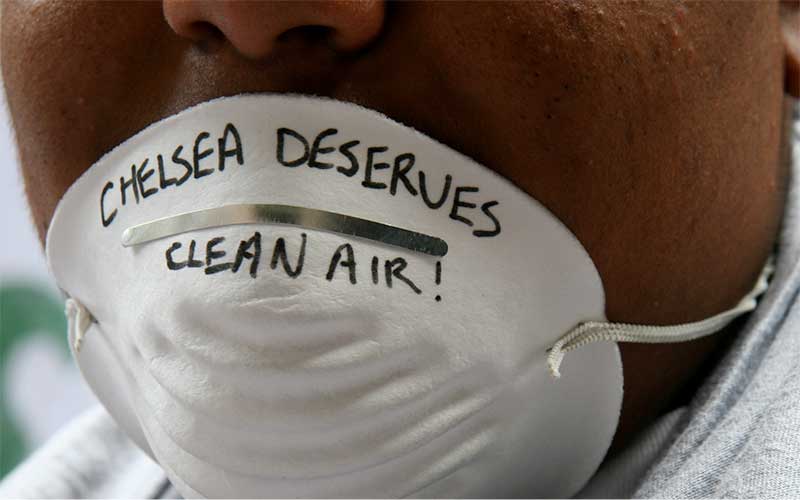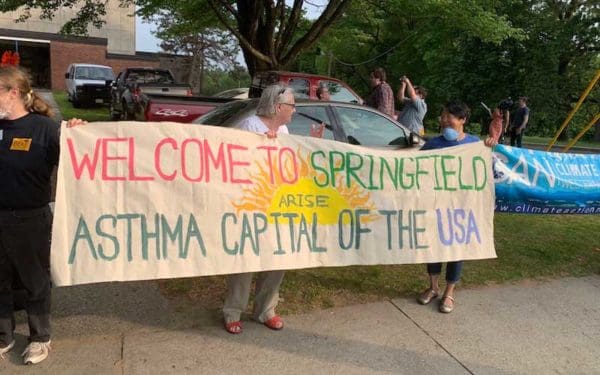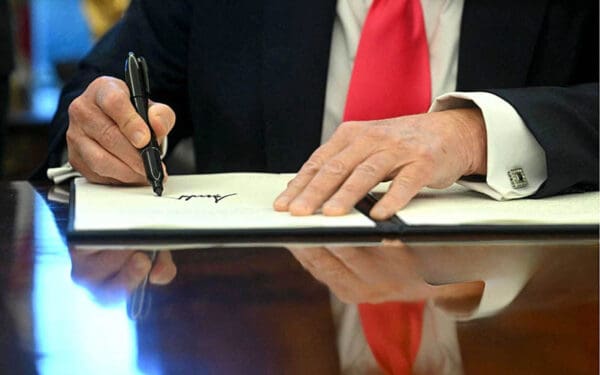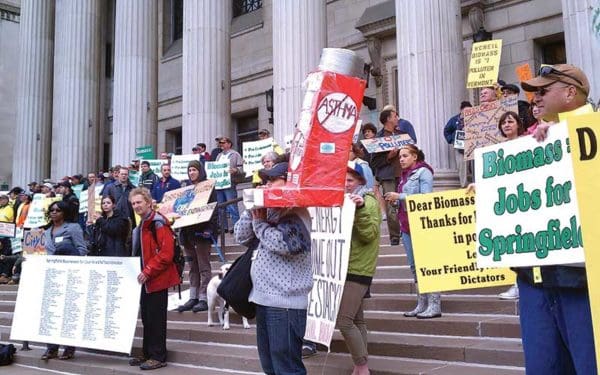
Low-income communities and communities of color are among the hardest hit by asthma and other respiratory diseases. Photo Credit: GreenRoots
Asthma kills thousands of people every year in the United States, and New England has some of the highest rates of asthma in the country. Low-income communities and communities of color are among the hardest hit by asthma and other respiratory diseases, as these neighborhoods are more frequently subjected to toxic air pollution from highway traffic, power plants, and other industrial activity.
These same communities are now bearing the brunt of the COVID-19 crisis. Deaths among people of color are far outpacing those of their whiter and wealthier neighboring communities. This crisis brings into stark relief the connections between air quality, health, and environmental justice.
In anticipation of World Asthma Day, May 5, I connected with two partners – María Belén Power from GreenRoots, Andrea Nyamekye of Neighbor to Neighbor – as well as my CLF colleague Staci Rubin. Together, we are working to highlight and solve these problems. The four of us spoke about air quality, public health, and what it means to live in an environmental justice community during a pandemic.
Below is an excerpt from our conversation, lightly edited for clarity.
Question: What is the connection between air quality and public health?
María Belén Power, GreenRoots: There’s a recent Harvard study out about air pollution and COVID-19. We’re still learning, and the data is still developing. But while we’ve heard that asthma is not a big contributor to COVID-19 – air pollution is. So, we know that air pollution exacerbates the impacts [of COVID-19].
Staci Rubin, CLF: The Harvard study – and there was another study done in England recently – shows that people who have been exposed to air pollution for a long period of time, approximately 15 years or more, are much more likely to die from COVID-19 than people who live in less polluted areas.
We know that the air pollution from burning fossil fuels – to power cars or trucks or power plants – damages people’s lungs, making them more likely to experience worse symptoms of COVID-19 and also more likely to die from the virus.
Andrea Nyamekye, Neighbor to Neighbor: I want to echo María Belén about recent articles. I think there was a New York Times article saying that asthma wasn’t the big factor when it came to COVID-19.
But really, it’s about the health of the entire community. And there are other factors such as diabetes or cardiovascular health or obesity. It might not be asthma, but the same communities that have asthma also have all of these other rippling health impacts.
If the health of an entire community is really low, or we’ve disinvested in that community so much and sited so many things [like polluting power plants] that have led to all these co-morbidities – those folks are still susceptible. And so really thinking about the health of an entire community – asthma’s definitely a key to that, but also there are these rippling effects that we’ve seen for decades, of specific communities having worse health outcomes than others, and therefore making them more susceptible to COVID-19.
Question: What are the impacts of decades of air pollution and other burdens on communities facing the pandemic?
María Belén Power, GreenRoots: Chelsea [Massachusetts] has come out to be the hardest hit community in the Commonwealth. And there are also other very hard-hit communities [in Massachusetts] like Brockton, Lawrence, Revere, Everett, and Holyoke.
I think of what Dr. [Anthony] Fauci [the National Institute of Allergy and Infectious Diseases Director] said at one of the press conferences – it’s not that the virus is actually infecting Black and Brown communities more. It’s that the public health inequities of these communities make it so much harder, and many times impossible, for people to recover from the virus. So, it’s not that the virus is choosing who it infects. It’s that these inequities that have been piled on are making it impossible for communities to recover and to bounce back.
But also, the economic and social conditions in our communities make it impossible to contain the virus. These are overcrowded housing conditions and people’s access to healthcare, people [not] trusting the healthcare system, and people’s immigration status preventing them or making them afraid of accessing the services that they need. I think all of these are exacerbating the effects of COVID-19.
But as it’s been said before, COVID-19 is not creating any inequities. It’s simply exposing them.
Andrea Nyamekye, Neighbor to Neighbor: It also just goes to the constant accumulation of burdens that make these communities more susceptible to getting the virus. Just looking back at the historical facts of Springfield being an asthma capital, and then Springfield and Holyoke both having the worst childhood mortality and diabetes rates.
The environment is what affects people’s health. And the constant overburdening of people’s environments that then leads to these co-morbidities make folks more susceptible to COVID-19.
Staci Rubin, CLF: I can say in my own community, which is a gateway city, just the other day I saw the line outside of the ALDI supermarket was ridiculously long. People were not able to maintain the six-feet-apart distance because they were standing in a line snaking through the parking lot. They were waiting to even get into the store to access the least expensive food that’s available in the general area. People are really struggling to get incredibly basic necessities like groceries. People are standing in that line, and they’re there for hours at a time, just waiting.
And I know it’s even worse in Chelsea. Their supermarket is located adjacent to a massive intersection with multiple highways coming together. Not a pleasant place to be. So literally just getting access to life-sustaining groceries is a huge challenge in my community, and I’m sure in many others right now.
It’s time to focus on environmental justice.
To echo María Belén, the COVID-19 pandemic is exposing inequities in Black and Brown communities – inequities that result from years of the disinvestment and disenfranchisement at the root of environmental injustice. These inequities will not go away when this coronavirus is eventually contained and media attention dies down. Environmental justice communities will still be disproportionately vulnerable to the slower-moving disasters, like air pollution, that lead to asthma, COPD, and other respiratory diseases. That’s why it’s so critical for us to shine a spotlight not only on the tragic and avoidable deaths happening now, but on the systemic failures to protect these neighborhoods that created these vulnerabilities in the first place.
Community-based organizations are working to improve health outcomes in their neighborhoods, and this needs to be paired with change at the state level.
Critical environmental justice bills pending before the Massachusetts legislature will help drive this change. These bills are designed to protect communities from further pollution, enable residents to have a say in projects that impact their neighborhoods, and increase access to resources like public transit, gardens, and playgrounds. Keep an eye on our website for more about these bills – and for more from my conversation with María Belén Power, Andrea Nyamekye, and Staci Rubin.
María Belén Power is the Associate Executive Director of GreenRoots, a community-based and resident-led environmental justice organization working in Chelsea and East Boston, Massachusetts.
Andrea Nyamekye is the Campaign and Policy Director at Neighbor to Neighbor, a Massachusetts-based grassroots power-building organization working to improve quality of life for local communities.
Staci Rubin is a Senior Attorney at CLF focusing on transportation advocacy and its intersection with public health and the climate crisis.



